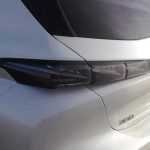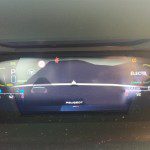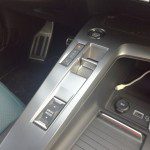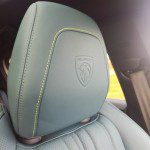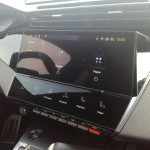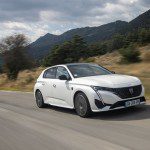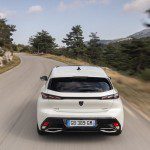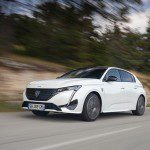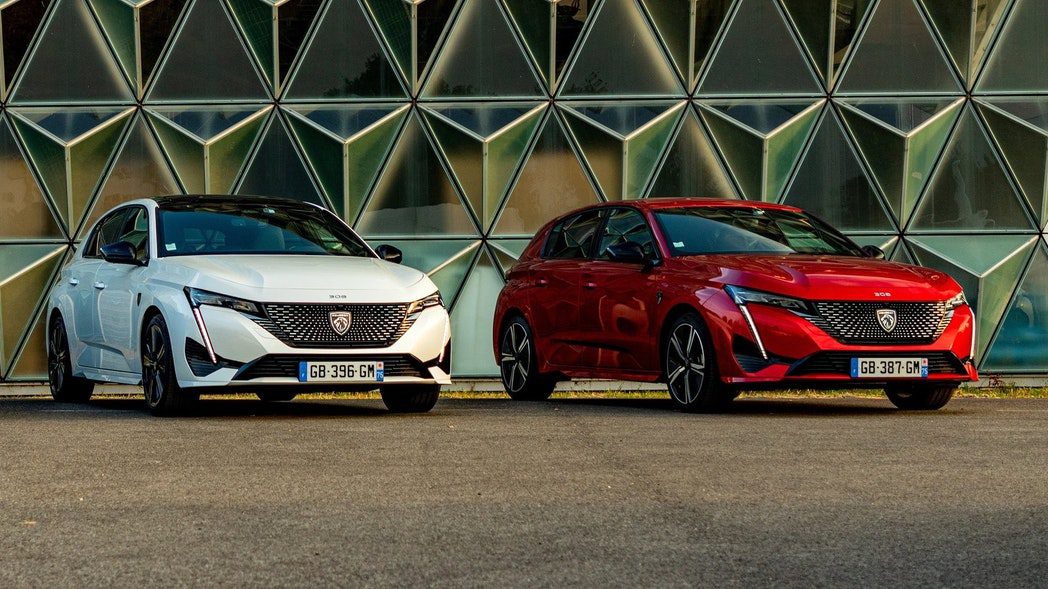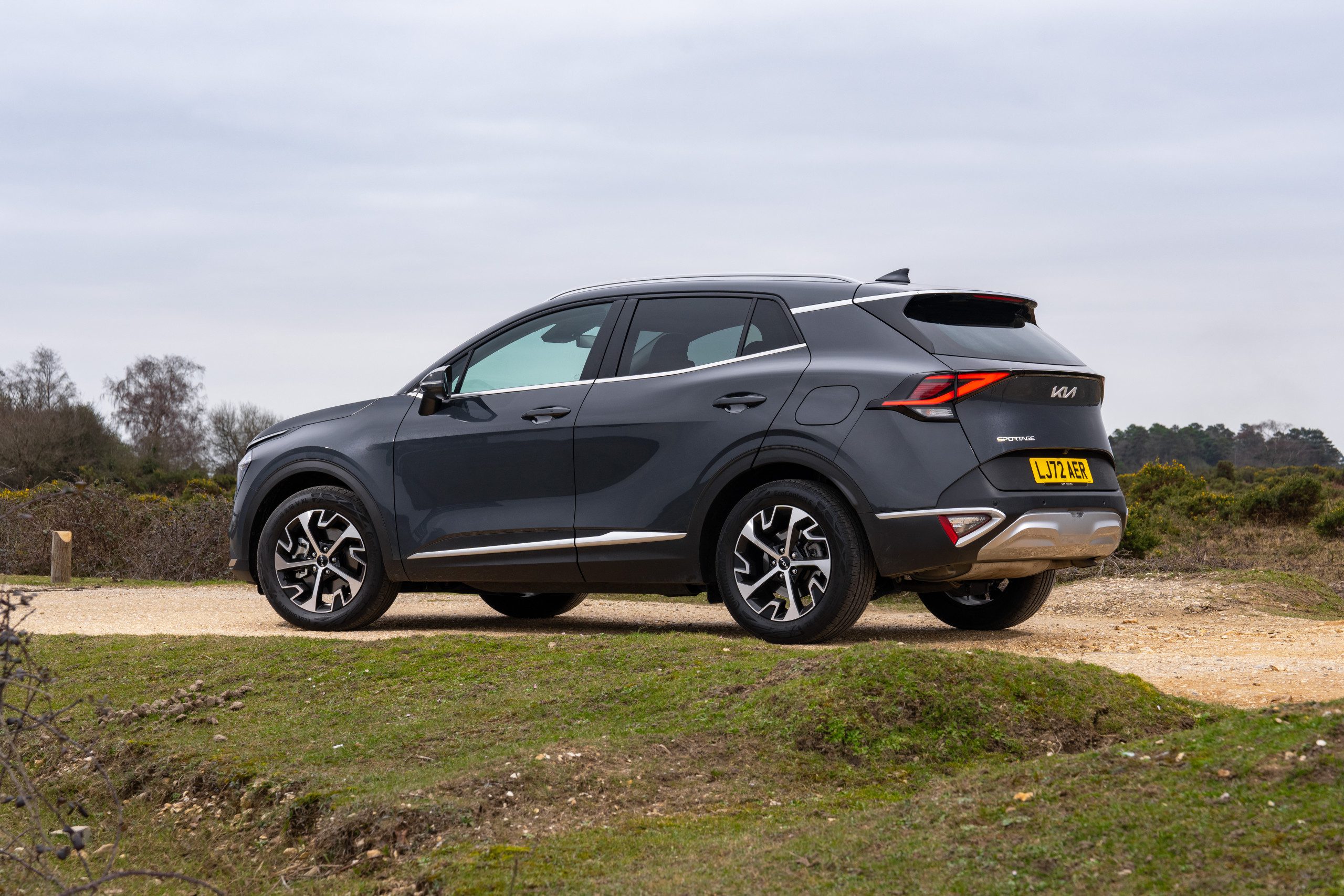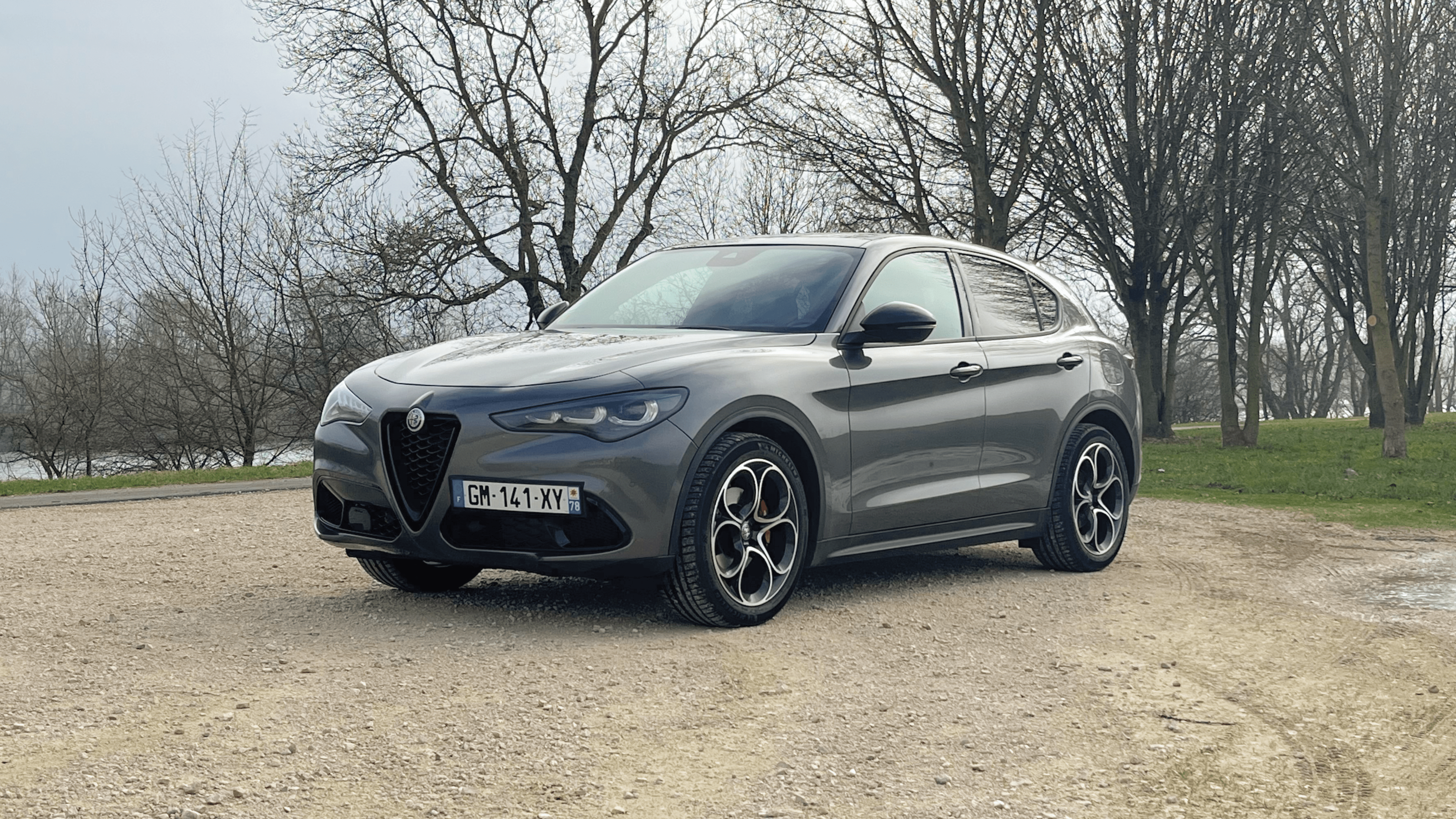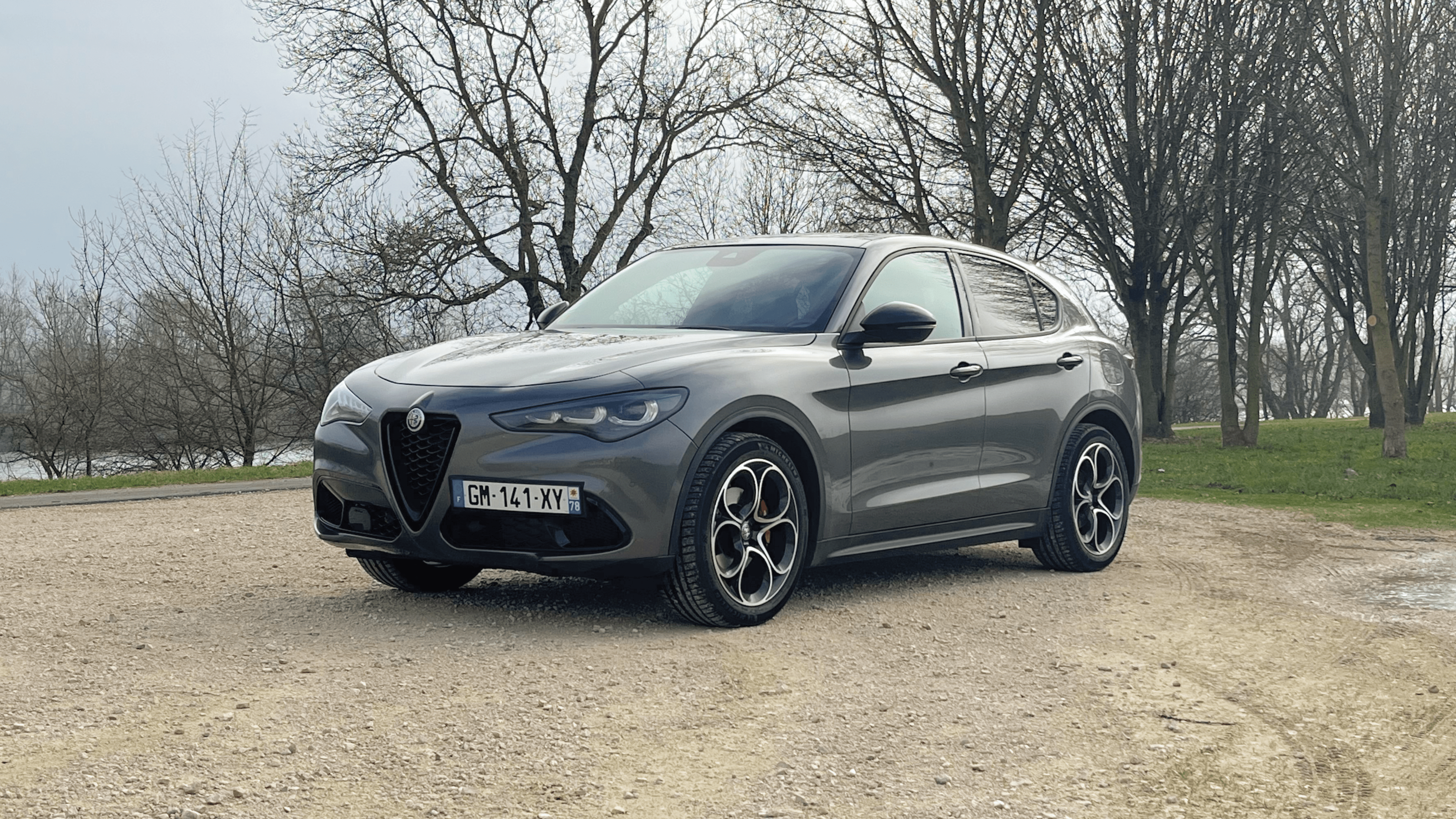Peugeot 308 review (2021) – The lion’s comeback
Better than a VW Golf?
It was voted European Car of the Year 2014. It has played a major role in Peugeot’s upmarket move. Despite its age, it is still the best-selling compact car in France. This year, the 308 is undergoing a transformation and is returning to the forefront with a third generation that is sharper than ever. Resolutely positioned between the mainstream and premium segment, the lioness will inevitably cross paths with the Volkswagen Golf and Mazda 3. The most daring will even pit it against the German premium trio composed of the Mercedes A-Class, Audi A3 and BMW 1 Series, a comparison that was still inconceivable a decade ago! Let’s see if the new version of the French compact car has the means to fulfil its ambitions.
Portrait – A successful metamorphosis
With a completely updated design, the new 308 undeniably attracts the attention of passers-by, who are sometimes intrigued, sometimes captivated. Although the car has an obvious family resemblance with the 208, it makes a complete break with the old 308. Judge for yourself: its bonnet is longer and flatter at sight, imitating unashamedly that of the first generation BMW 1 Series. The huge grille with its changing glossy black spikes proudly welcomes the new logo of the brand in its centre. A logo that can also be found on the front wings in the manner of a Ferrari! As for the rear, it features the now classic black lacquered strip housing the lion claw-like taillights. In addition to the aesthetic details, the transformation of the compact car can also be seen with the ribbon in hand: as was the case for the 208, the 308 is longer and has been extended to 4.36 m (+11 cm). Its width remains at 1.80 m while its height is reduced by 2 cm to 1.44 m. The French car is thus proportioned and has a more upmarket appearance, and this change in silhouette suits it well.
In the cabin – A revised i-Cockpit
While the exterior is a clear break with the previous model, the interior has been more timidly redesigned, with a change that is closer to evolution than revolution. The dashboard is slightly more massive, with the i-Cockpit combining a small steering wheel and a raised three-dimensional instrument panel. In the centre is a 10-inch touch screen with an updated infotainment system. The interface is quite well thought out and is much more fluid, with a second touch screen where you can insert your shortcuts as you wish.
Despite the addition of physical controls at the bottom, the general ergonomics remain complex, due to the numerous sub-menus that require a little time to adapt. We strongly recommend that you do the manipulations while standing still, as your finger may accidentally slide over a nearby icon. At the same time, let’s take the opportunity to have a look at the materials used. The latter are well made with coverings alternating between generously soft-touch plastics and finely woven stitching. The whole is of a very good level, the assemblies are rigorous and the brittle hard plastics take a long time to show themselves. We can even say without babbling that the interior is of better quality than that of the Volkswagen Golf, which used to be a reference in the segment.
The wide range of seat adjustments allows you to create a driving position that is just right for you… or almost. History repeats itself, the same detail comes to play the spoilsport: depending on the driver, the steering wheel rim can partially hide the instrument cluster. This is a pity because the 3D effect of the gauges is very good. The AGR-certified seats on the higher trim levels are a nice consolation prize. Powered, heated and massaged, they are naturally pleasant on long journeys. In the rear, however, passengers are less spoiled and have the impression of being in second class. Elbow room is reduced, while knee room and headroom are limited. The plastics at the top of the rear doors also become hard, which was not the case on the previous 308. On the other hand, the boot remains one of the most generous in the segment with a volume of 412 litres for the purely thermal versions and 361 litres for the hybrid models.
On the road – Still one of the best
The previous 308 was close to excellence in terms of road holding. Its replacement is certainly at the top of its class. Very incisive in corners, its front end does not seem to know laziness while the rear end brilliantly handles curves whatever the quality of the surface. The steering is also direct and effortlessly pushes back the limits of understeer, to the point where the stability control is out of action for a long time even when a racer is behind the wheel. The 308 HYBRID 225 combines the 1.6 PureTech 180 with an electric motor for a combined power of 225 PS and 310 Nm of torque. Acceleration is convincing (0-60 in 7.5 seconds) as is throttle response, well-orchestrated by the e-EAT8 gearbox.
In terms of dynamic driving, the picture is therefore very positive, although the new 308 is no match for the old model. The car has become softer with smoother suspension and damping. Without tipping over into excessive softness like the Citroën C4, the 308 also provides a very good level of comfort. The undulations are well digested at high speeds. In the city, the lioness admits to a certain firmness although it remains far from being uncomfortable, especially since our model was equipped with 18 inch wheels.
The tight turning radius and light steering provide satisfactory handling. Peripheral visibility is good, although the A- and C-pillars could have been slimmed down a bit. The very practical 360° camera – now immediately active – will make up for this problem. The smoothness provided by the electric motor works wonders in urban environments where the 308 HYBRID evolves essentially in silence. Only the braking remains difficult to control with a perfectible pedal feel. We measured a range of 27 mi (44 km) in electric mode and a fuel economy of 42 mpg (6.7 l/100 km) in hybrid mode over a distance of 870 mi (1,400 km), two honourable but not extraordinary values.
On the motorway, the 308 feels at home with reassuring handling, even when the god Eole is in a joking mood. Speaking of wind, the soundproofing is of an excellent level for the category, with aerodynamic and road noise well contained. The Matrix LED headlights are highly effective once the sun goes down, but can be unresponsive in rare cases. The level 2 semi-autonomous driving system, called Driver Assist, works fairly well, although it can be a little unsteady on some fast corners. The small 39-litre tank will also require more frequent refuelling stops than with the petrol and diesel versions.
Competition
Peugeot now claims to be a top-of-the-range generalist and this is felt when it comes to finance, as the 308 is now positioned in the upper middle of the category. While the entry-level Active Pack PureTech 110 starts at €24,800, our GT Pack HYBRID 225 test model immediately climbs to €44,900 and tops out at €49,150 with its few options. A Volkswagen Golf GTE (245 PS, €46,550) offers more power but less equipment for an even higher price. Its Spanish cousin, the Cupra Leon e-HYBRID (245 PS, €42,790), is more affordable, although its technological content is not as good. Premium cars also offer plug-in hybrids models but their prices are skyrocketing for equipment that is still lacking (€46,299 for a 218 PS Mercedes A-Class AMG Line and even €47,470 for a 245 PS Audi A3 S Line). You should expect to pay a lot more to match the Peugeot’s arsenal. So the 308 HYBRID’s initially high price is finally acceptable, without being competitive in the least.
Conclusion
As the saying goes, it’s not just about looks. That’s fortunate, because as well as having a charming style, the new 308 has a real beauty inside. Its interior is original and of high quality, while comfort and road handling are good. The performance provided by the hybrid system is real and the consumption remains reasonable if you plug the car in religiously. Well placed, the price/equipment ratio is convincing. Only the rear passenger compartment is less spacious than that of the competition.
Strengths
- Excellent compromise between comfort and handling
- Stylish exterior and interior
- Up-to-date technology content
Weaknesses
- Tricky ergonomics
- Bumpy ride in town
- Tight rear space
Verdict : 14,3/20
I would like to thank Peugeot France for lending me the vehicle, otherwise this review would not have been possible.
Recommend0 recommendationsPublished in Cars, Reviews


